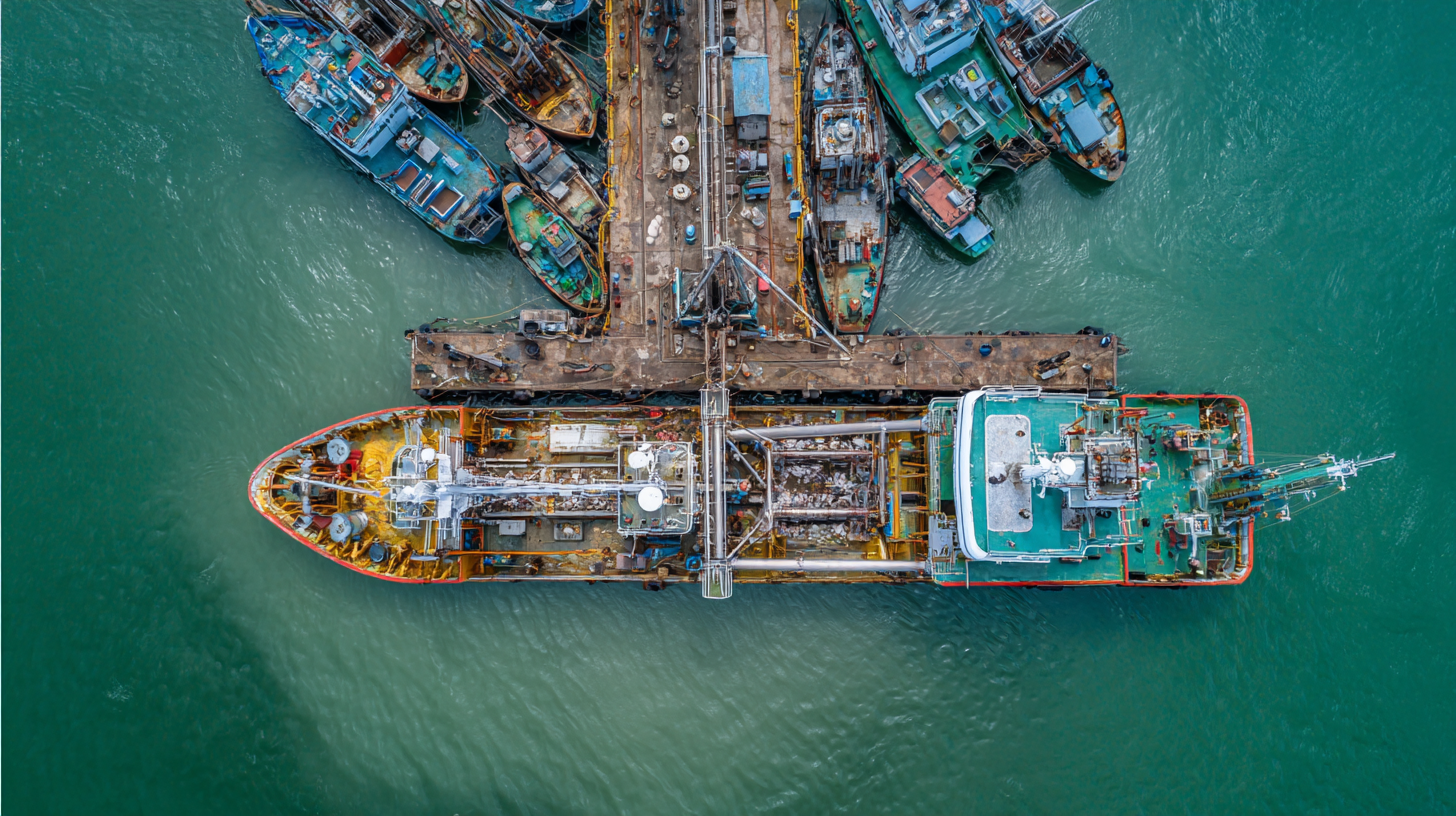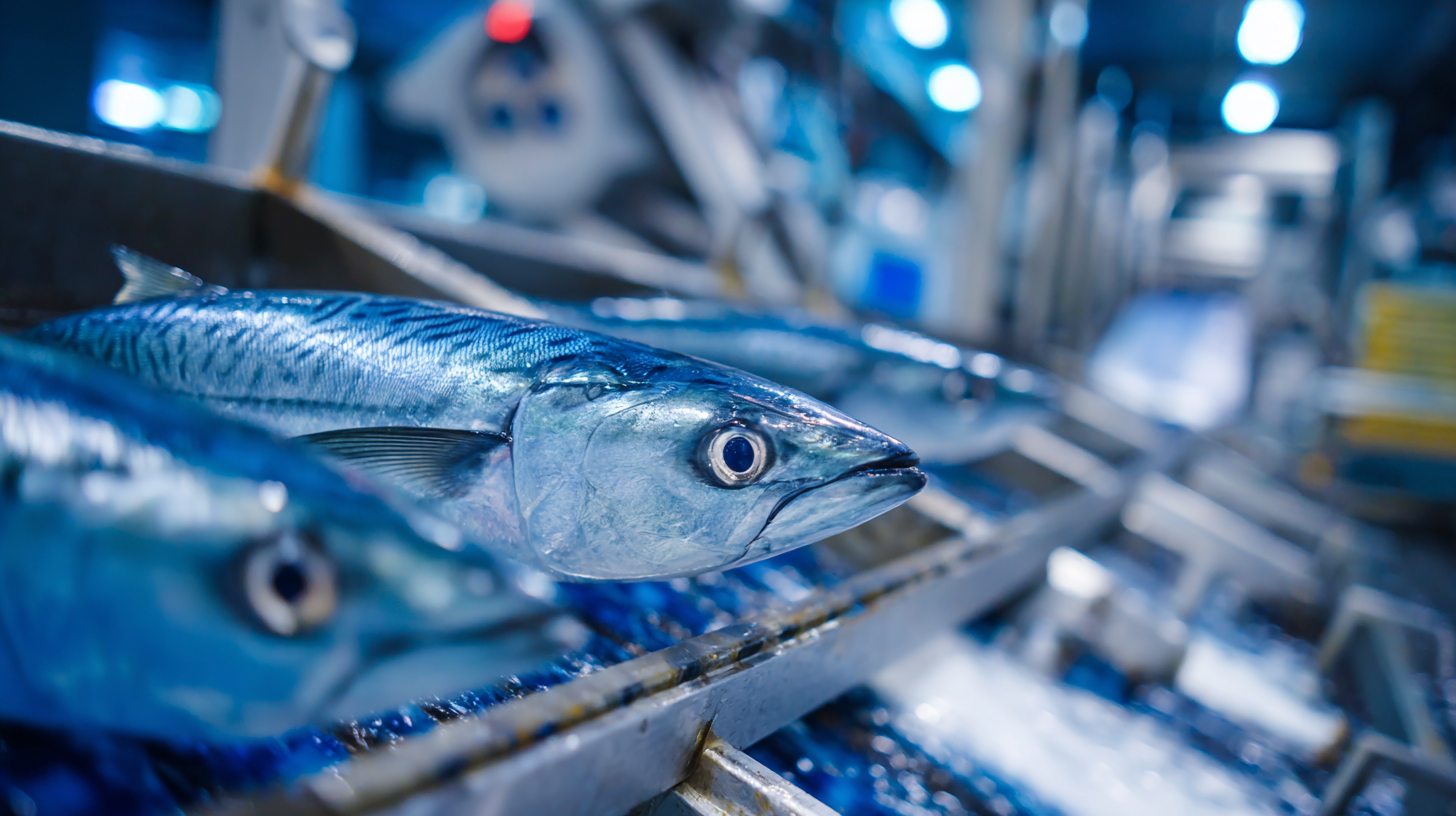Master the Essentials of Best Fish Processing Equipment with Expert Insights and Proven Techniques
The global fish processing equipment market has seen significant growth, expected to reach USD 18.5 billion by 2025, driven by the increasing demand for seafood and a focus on sustainable practices. As the seafood industry evolves, the necessity for efficient and advanced fish processing equipment becomes paramount. Innovative technologies, such as automated filleting machines and high-capacity freezing solutions, are revolutionizing the way fish is processed, ensuring higher quality and reduced waste.

This blog explores essential insights and proven techniques in fish processing equipment, showcasing real-world industry applications that not only enhance productivity but also align with health and safety standards. By leveraging expert knowledge and data-backed strategies, businesses can streamline their operations and meet the growing consumer demands for processed fish products.
Join us as we delve into the key components that define successful fish processing and highlight the critical role that specialized equipment plays within this vibrant sector.
Key Trends Shaping the Future of Fish Processing Equipment by 2025
The global food processing system market is anticipated to witness substantial growth, projected to rise from $60.63 billion in 2024 to $63.78 billion in 2025, and expected to reach $95.68 billion by 2033, marking a compound annual growth rate (CAGR) of 5.2%. This growth trajectory reflects increased investments in innovative technologies and efficient production methods, paving the way for enhanced fish processing equipment. As the industry evolves, manufacturers are focusing on automation, sustainability, and improved product quality to meet the changing market demands.
Particularly in the seafood sector, the market for processed seafood is set to expand notably, driven by rising consumer preferences for convenience and health-oriented products. Tuna exports alone are projected to reach $1 billion in Vietnam by 2024, showcasing an 18% increase from the previous year. Such trends underline the necessity for advanced fish processing equipment that not only improves efficiency but also supports seafood preservation and quality assurance. As we look towards 2025 and beyond, adapting to these key trends will be essential for industry stakeholders to thrive in a competitive landscape.
Key Trends in Fish Processing Equipment by 2025
Essential Fish Processing Techniques to Enhance Quality and Efficiency
The global food processing systems market is expected to reach a staggering $60.63 billion by 2024, with projections soaring to $96.68 billion by 2033. This growth is driven by innovations in fish processing techniques, which not only enhance quality but also significantly improve efficiency across operations. As the largest aquaculture producer in the world, China plays a pivotal role in this sector, leveraging advanced methodologies to optimize its supply chain and maintain its competitive edge.
The integration of Artificial Intelligence (AI) into fisheries is redefining sustainable practices. By utilizing AI, companies can better manage their resources, resulting in more effective ecological management and reduced waste. This transition to "Fisheries 2.0" is essential as it aligns with the increasing demand for high-quality protein, addressing challenges related to food security. For instance, as more consumers seek nutritious options, the focus on sustainable practices in fish processing becomes crucial, supporting both seafood quality and environmental health.
Top Features to Look for in Modern Fish Processing Equipment
When it comes to modern fish processing equipment, selecting the right features can significantly enhance efficiency and sustainability in the industry. One of the top features to look for is advanced automation, which can streamline operations and reduce labor costs. Moreover, energy efficiency is essential in modern equipment, helping to minimize operational expenses and environmental impact.
Another critical aspect is the versatility of the equipment. Processing fish involves various stages, such as freezing, filleting, and packaging. Therefore, having multi-functional machines can save space and resources while allowing for quick switches between processing tasks. Additionally, investing in equipment that supports data integration is beneficial, as it aids in monitoring quality and optimizing production.
**Tips:** Always consider durability and ease of maintenance when purchasing fish processing equipment. Machines that are easy to clean and maintain will lead to less downtime and increased productivity. Furthermore, look for suppliers that offer robust customer support to assist with any technical issues that may arise, ensuring your operations run smoothly and efficiently.
Data-Driven Insights: Analyzing Market Growth and Demand in Fish Processing
The fish processing industry is experiencing remarkable growth, driven by increasing demand for seafood globally. Data-driven insights reveal that consumer preferences are shifting towards sustainably sourced and processed fish products. Analyzing market trends highlights the importance of investing in efficient fish processing equipment, which not only enhances productivity but also ensures product quality.
One tip for businesses is to prioritize the selection of equipment that aligns with sustainability goals. This includes energy-efficient machines and those that minimize waste during processing. Additionally, regular training for staff on the latest processing techniques can lead to better handling of the fish, ultimately improving the end product.
Another essential aspect is staying informed about market developments. Companies should invest in market research to understand consumer trends and adapt their processing methods accordingly. Utilizing data analytics can help identify new opportunities for product innovation, enabling businesses to cater to the evolving preferences of health-conscious consumers seeking high-quality fish products.

Utilizing Technology to Improve Sustainability in Fish Processing Practices
In the modern fish processing industry, sustainability has become a paramount concern. According to a report by the Food and Agriculture Organization (FAO), about one-third of all fish caught globally is discarded or wasted, which poses significant environmental challenges. Utilizing advanced technology in fish processing can significantly reduce waste and improve resource efficiency. Techniques such as precision filleting machines not only enhance yield but also minimize the amount of fish that goes to waste. By incorporating sustainable practices, the industry can ensure a more responsible approach to fish processing, benefitting both the environment and the economy.
Tip: Implementing advanced tracking systems can help processors monitor their yield more effectively, allowing for adjustments that maximize efficiency. Additionally, adopting plant-based by-products not only reduces waste but can also create new revenue streams.

Emerging technologies such as AI and IoT are also paving the way for increased sustainability in fish processing. These tools can optimize processing operations by predicting fish demand and streamlining workflows, thereby reducing overproduction. A recent study found that integrating IoT solutions can improve operational efficiency by up to 25%, significantly lowering the carbon footprint of fish processing facilities.
Tip: Regular training programs for staff on sustainable practices can foster a culture of sustainability within the workplace, leading to collective efforts towards minimizing waste and enhancing processes.









